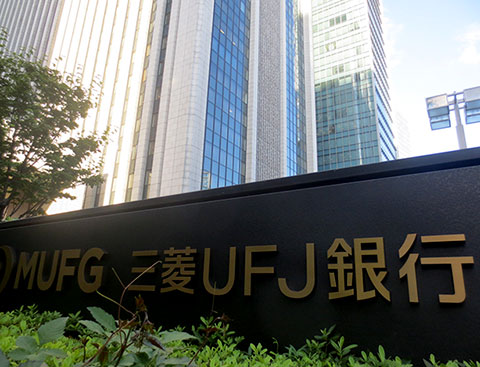
MUFJ Bank Joins Electricity Futures-Accepting Orders From Domestic and Overseas Customers
Sep. 09, 2024
Japan Exchange Group (JPX) announced on August 30 that it approved a trading qualification for trustees to electricity futures transaction on Tokyo Commodity Exchange (TOCOM)-a subsidiary of JPX-to Mitsubishi UFJ Bank (MUFJ). The Bank acquired the qualification on September 6. It is 10th trader who acquired the qualification for trustees in electricity futures transaction on TOCOM. Also, in energy futures transactions, etc on Japan Securities Clearing Corporation (JSCC), it is 11th clearing member. As a result, MUFJ can treat orders from domestic and overseas investors from entrustment to clearing regarding energy futures transactions on TOCOM. As for TOCOM, new trading qualification for trustees is the first time since the merger of TOCOM and JPX in October 2019.
The relationship between MUFJ and commodity futures trading dates back to 1990 when the name of the bank was The Mitsubishi Bank. In October 1990, The Mitsubishi Bank teamed up with Diamond Lease to set, and sold the first commodity fund as a city bank. Sales of the fund was in US dollars and its sales amount was 64 million dollars, so it was a large class at that time. At the beginning, the funds were mainly principal-guaranteed type, but active funds have also started to be established in 1996, and as a result, the total number of funds reached 14. In addition to those funds, major banks such as The Sumitomo Trust and Banking (Sumitomo Mitsui Trust Bank at present) and The Sumitomo Bank (Sumitomo Mitsui Banking Corporation at present) sold commodity funds, and city banks’ entry into commodity fund business had a major impact.
What is noteworthy about it was the set amount has increased by an order of magnitude. For example, as for the principal-guaranteed commodity funds set by The Sakura Bank (Sumitomo Mitsui Banking Corporation at present) in July 1997, their set amount was 11 billion 160 Million yen each, and as for the principal-guaranteed commodity fund set by The Bank of Tokyo-Mitsubishi (MUFJ Bank at present) in September 1997, its set amount was 23 billion 300 million yen, so their set amounts were one digit different from those of previous commodity funds.
However, what is affected more than the set amounts was sometimes pointed out that it was a change in sales methods. Until then, door-to-door sales to large institutional investors were the main focus, however, after that, major banks such as The Mitsubishi Bank sold their commodity funds through their respective nationwide branch networks. In other words, instead of door-to-door sales, a new style of over-the-counter sales was introduced. Therefore, the view is that it is the backbone of energy futures transaction sales including electricity futures this time would be valid.
In fact, when commodity funds were first sold, bank branch employees were so overwhelmed with inquiries that they were confused, however, bank creditworthiness and branch network were strong, so sales amounts of commodity funds by banks were an order of magnitude different from the common sense of the commodity futures industry.
These movements were greatly influenced by the financial version of big bang at the time. Because interest rates on deposits were low, diversification of operations was required in a situation where there were concerns that depositors would leave banks in the near future, so commodity fund was positioned as a future hedging tool for banks. This time, electricity futures is probably recognized as a revival tool in response to the past reality.
(Futures Tribune・issued September 3, 2024 ・no.3309)
Link(Japanese site)
©2022 Keizai Express Corp.